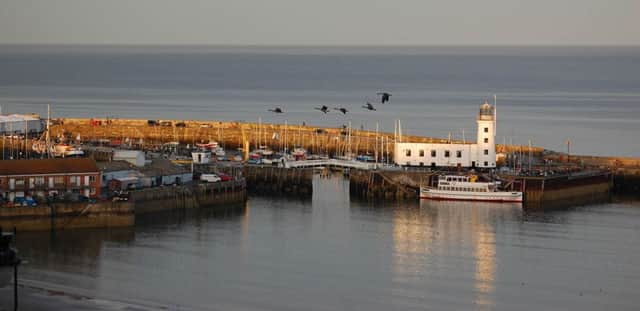Scarborough tops rankings for heritage activity


But its illustrious history, natural wonders and the selflessness of its residents in protecting the town has seen it ranked as one of the best areas in the UK for heritage.
A new Heritage Index developed by the think tank RSA and the Heritage Lottery Fund ranks for the first time which areas are making best use of their heritage assets through activities such as volunteering, the number of people visiting museums and the number of nights people spend on holiday in a local area.
Advertisement
Hide AdAdvertisement
Hide AdWhile the City of London, with its huge number of heritage assets and visitors, predictably came top in the overall index, Scarborough topped the survey for heritage activity, and came third in the overall ranking.
The report said: “Scarborough’s natural heritage helps move it up the rankings: local residents’ keen interest in nature and wildlife volunteering, the care of Blue Flag beaches and protected sites for nature, its location on the edge of the North York Moors National Park - all of which attract high numbers of visitors.”
The seaside town has long celebrated it history. In the 1980s Scarborough Borough Council commissioned at Heritage Trail and dark blue plaques can still be seen marking almost 50 locations, including the Grand Hotel, Theatre Royal, Peasholm Park, North Bay Pier and the Old Quaker Meeting House.
Scarborough Civic Society works hard to maintain many aspects of the town’s history, and has placed more than 70 Blue Plaques marking notable people or buildings in the town.
Advertisement
Hide AdAdvertisement
Hide AdThe society’s chairman Adrian Perry said he “wasn’t surprised in the slightest” to hear the town had ranked so highly.
He said: “Scarborough rightly claims to be the first seaside resort so we have a tremendous heritage of notable people visiting, and staying in, Scarborough - it was one of the most important town’s outside of London in the Victorian era.”
The Society’s blue plaques honour many of those notable people, from Lord Londesborough, who founded the town’s famous cricket festival in 1875, and prolific inventor Sir George Cayley, who was born in Scarborough in 1773.
The town’s literary heritage is also recognised, with plaques at the former home of the Sitwell family on The Crescent, and at the site of the favourite lodgings orf Anne Bronte, where the Grand Hotel now stands.
Advertisement
Hide AdAdvertisement
Hide AdMr Perry said: “But it’s not just about recognising those who lived hundreds of years ago - we also honour those who died recently, such as the violinist Max Jaffa, who lived here for many years.
“The people of Scarborough are very proud of their heritage and interested to know more about it. We produce a lot of publications and guides, and find that they are not just popular with the tourists, but people who are from here too.”
While Scarborough was celebrated, some towns, such as Luton, were criticised in the report for the low number of heritage assets.
RSA chief executive Matthew Taylor said: “The UK’s heritage is much-loved but its immense value is being ignored.
Advertisement
Hide AdAdvertisement
Hide Ad“The challenge for local authorities is to raise their sights from protecting history, although this is vital, to the possibility of heritage being at the heart of the conversation about a place’s future.”
The index used indicators such as nature reserves, listed buildings, blue plaques and even foods with protected status to rank each local authority area.
It revealed no correlation between heritage scores and how prosperous or deprived an area is, with relatively poor areas such as Burnley and Portsmouth and rural areas including Barrow-in-Furness found to be rich in local heritage and involvement.
There is no heritage divide between cities and the countryside, with towns rich in industrial history and listed buildings while rural areas contain an abundance of natural sites, and the north-south split is also very narrow.